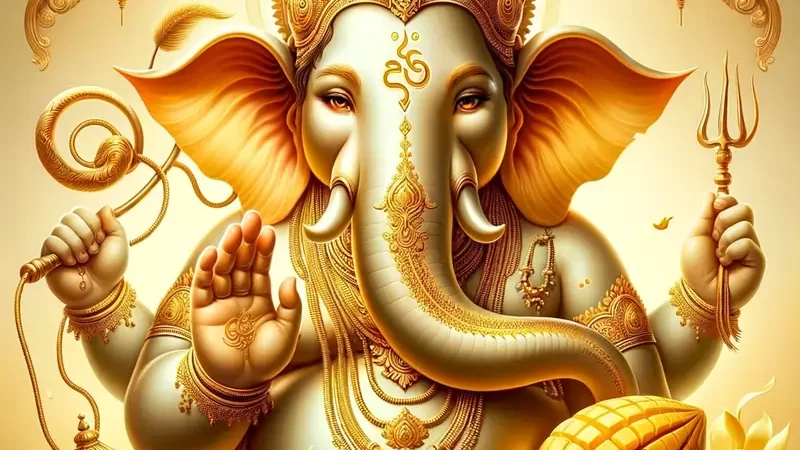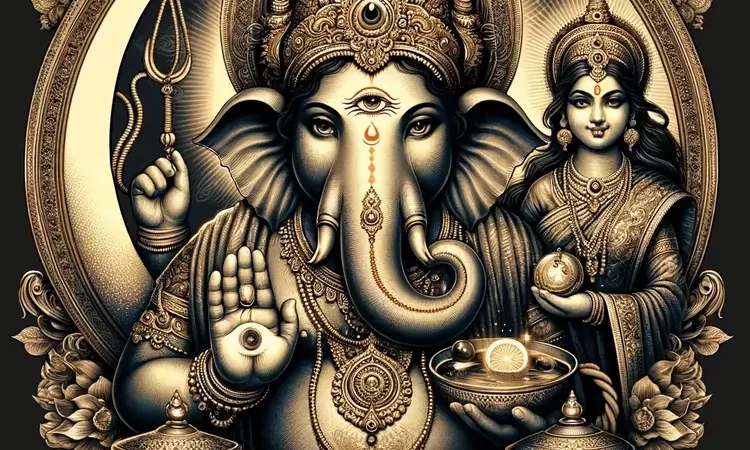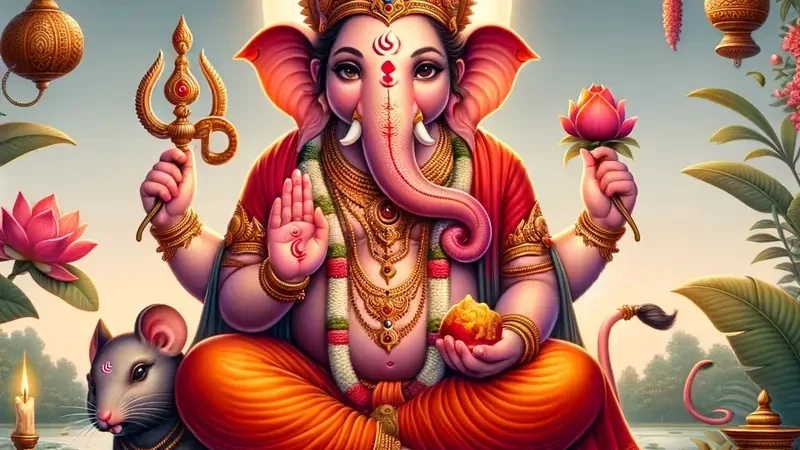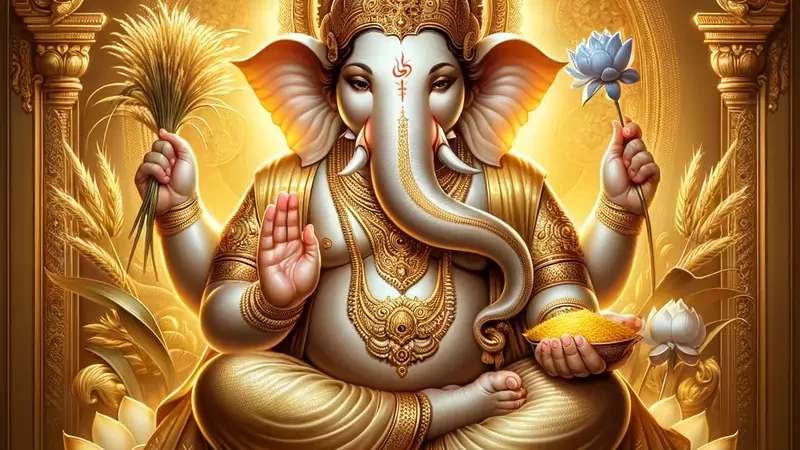Dvija Ganapati: The Divine Symbol of Disciplined Striving

Introduction
In the vast pantheon of Hindu deities, Lord Ganesha stands out as one of the most beloved and revered figures. His elephant-headed visage and portly physique make Him instantly recognizable, and His presence is believed to bring wisdom, knowledge, prosperity, and the removal of obstacles. Among the many forms and manifestations of Lord Ganesha, Dvija Ganapati (द्विज गणपति) holds a unique and significant place. In this article, we will delve into the symbolism, attributes, and spiritual significance of Dvija Ganapati, the “Twice-Born” deity.
The Divine Appearance of Dvija Ganapati
Dvija Ganapati, also known as the “Twice-Born” Ganapati, is depicted as a four-headed deity. His moon-like complexion radiates a serene and divine glow. Each of His four heads symbolizes a unique aspect of His personality and divine attributes. These multiple heads signify His expanded consciousness and heightened awareness, which are essential qualities for spiritual seekers.
The Symbolism of Dvija Ganapati’s Hands and Attributes
Dvija Ganapati’s form is adorned with various sacred symbols and attributes, each carrying deep spiritual significance. His hands hold specific objects that convey profound messages to those who contemplate His image:
- Noose (Pasha): One of His hands holds a noose, representing the divine power to capture and bind negative thoughts, desires, and tendencies. It symbolizes His ability to free devotees from the snares of material attachments.
- Goad (Ankusha): In another hand, Dvija Ganapati wields a goad, which serves as a tool to guide and control the mind. The goad signifies His mastery over the human intellect, directing it towards virtuous actions and righteous living.
- Ola Leaf Scripture (Ola Patra): Dvija Ganapati’s third hand holds an ola leaf scripture, emphasizing the significance of knowledge and wisdom. The sacred scriptures represent His role as the bestower of divine understanding and enlightenment.
- Staff (Danda): The staff held by Dvija Ganapati symbolizes discipline and self-control. It reminds devotees of the importance of leading a disciplined life on the spiritual path.
- Water Vessel (Kamandalu): His fifth hand carries a water vessel, signifying purity and the cleansing of one’s inner self. The water vessel encourages seekers to purify their hearts and minds through spiritual practices.
- Japa Beads (Mala): Dvija Ganapati’s final hand holds a string of japa beads, underscoring the significance of devotion and prayer in one’s spiritual journey. The beads represent the constant remembrance of the divine and the power of mantra repetition.
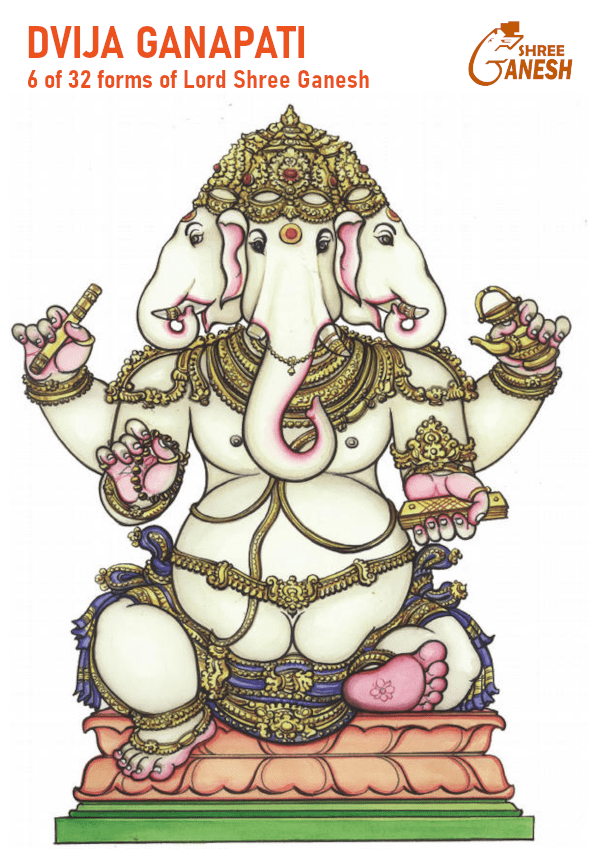
The Spiritual Significance of Dvija Ganapati
Dvija Ganapati’s distinctive form and symbolic attributes impart essential lessons for spiritual seekers:
1. Expanded Consciousness: The four heads of Dvija Ganapati signify an expanded consciousness that transcends the limitations of the physical world. It reminds us that spiritual growth involves a broadened perspective and a deeper understanding of reality.
2. Mastery Over the Mind: His use of the goad and noose symbolizes His control over the mind and its tendencies. Devotees are encouraged to emulate this mastery by practicing mental discipline and self-control.
3. Pursuit of Knowledge: Dvija Ganapati’s possession of the ola leaf scripture highlights the importance of acquiring knowledge and wisdom on the spiritual path. It serves as a reminder that true enlightenment is born of both inner realization and external learning.
4. Emphasis on Discipline: The presence of the staff and water vessel underscores the significance of discipline and inner purification. Spiritual growth requires dedication, self-discipline, and a commitment to inner cleansing.
5. Devotion and Prayer: The japa beads in Dvija Ganapati’s hand symbolize the power of devotion and repetitive prayer. Chanting the divine name and practicing regular prayer are essential components of spiritual progress.
The Invocation of Dvija Ganapati
Devotees often invoke Dvija Ganapati with a sincere heart, seeking His blessings for various aspects of life. His form as the “Twice-Born” deity inspires individuals to awaken their inner potential and embark on a spiritual journey of self-discovery and transformation.
In Hindu tradition, prayers and rituals dedicated to Dvija Ganapati are performed with the utmost reverence. Devotees believe that by worshiping Him, they can overcome obstacles, gain spiritual insight, and cultivate the virtues necessary for leading a righteous and fulfilling life.
Conclusion
Dvija Ganapati, the “Twice-Born” deity, encapsulates the essence of disciplined striving on the spiritual path. His unique form and symbolic attributes serve as a source of inspiration and guidance for seekers who aspire to transcend worldly limitations and realize their divine potential. As we contemplate the multifaceted symbolism of Dvija Ganapati, we are reminded of the eternal truths that underlie the quest for spiritual awakening and inner transformation.
Read 32 Forms of Lord Ganesha >>


